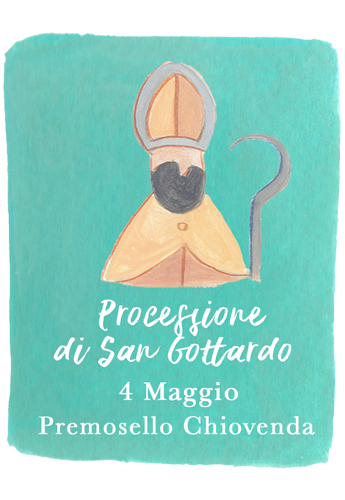Processione di San Gottardo


St. Gotthard is celebrated on May 4, the patron Saint of Premosello Chiovenda, but especially of Colloro, where there are the Church dedicated to the Saint and the statue that on that day is carried during the procession through the streets of the hamlet. The feast of St. Gotthard is always held on May 4, whatever the day of the week: it is not celebrated on the first Sunday since, according to tradition, the year in which it was decided to do so was characterized by a particularly poor harvest. The feast is characterised by some key elements: the Holy Mass in the Church of S. Gottardo in Colloro, very popular in the community of the village; the blessing of rye bread, carried on the shoulders in the characteristic panniers; the procession through the streets of the village with the statue of the Saint and with many stops at some fixed points of the route; the distribution of the blessed bread, which in the past lasted for several months. When they come back to the church, the blessed rye bread is distributed to the participants. In the past, bread was prepared a few days before by the women of the village with the flour gathered from home to home: “The tour starts from the Ruga house, goes up to the Ragozza house, then to the Marèla house, to the Andreolotti house and finally to the Fontana house … “. Taken from “Aria di Casa Nostra” by Don Erminio Ragozza. Today the inhabitants of the village prefer to buy bread directly from the bakery, through a collection of offerings. The participants, during the feast, do not forget to spustàa o stramüdàa la vita, that is, to move the metal reproductions of parts of the body from the pegs on which they are hung to a corner of the church in order to avoid ailments.